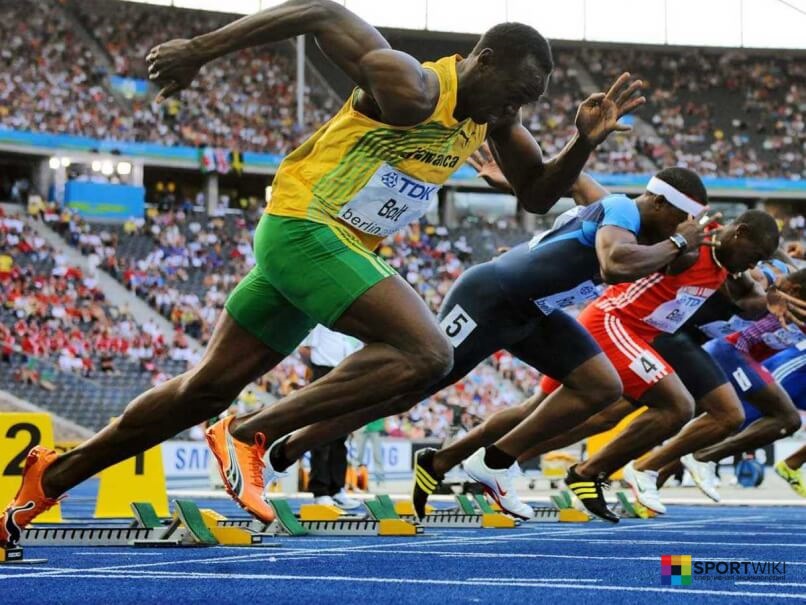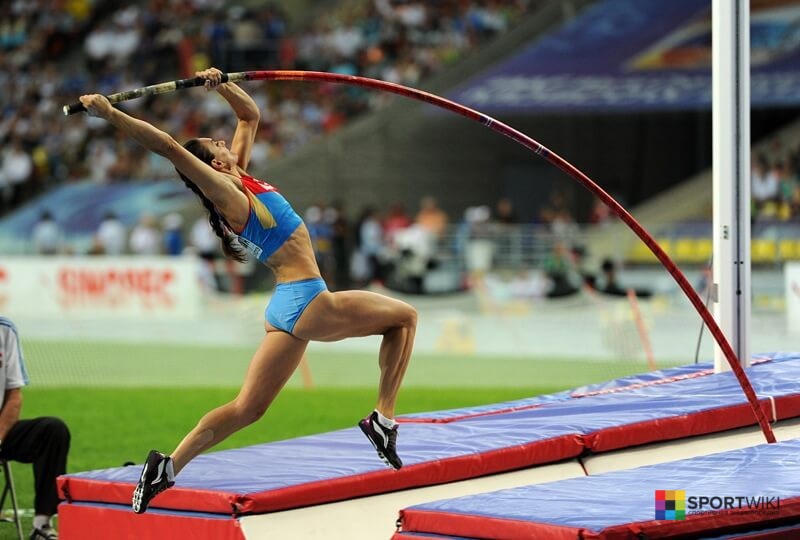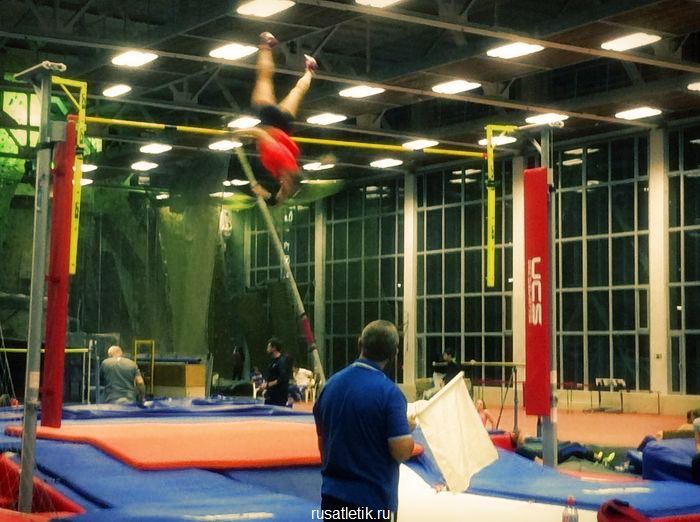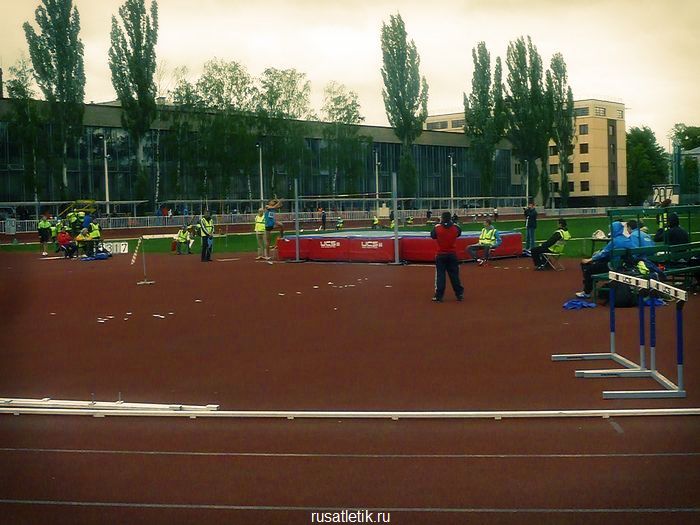Combines several sports: running, walking, jumping and throwing and all-around. Each of them, in turn, is divided into varieties.
One of the main and most popular sports. Athletics is often called the "queen of sports."
History
The homeland of athletics is rightfully considered Ancient Greece. Proof of this are the finds of archaeologists: vases, sculptures, coins, and other objects with the image of competing athletes, created several centuries BC. The largest competitions were held there - the Olympic Games, at which the best athletes of the world competed. Modern athletics originated in the 19th century in England. In 1837, the first running race at a distance of about 2 km was held in this country. In Russia, the history of athletics has been going on since 1888, when a group of enthusiastic athletes created a circle of runners who later turned into a circle of sports enthusiasts. In 1911, the All-Russian Union of Athletics Enthusiasts was created, and a year later 47 Russian athletes took part in the Olympic Games in Stockholm.
Benefit
The benefits of athletics are difficult to overestimate. Regular, or at least several times a week, jogging or walking, for at least five to ten minutes, are a worthy alternative to exercise in fitness centers, especially if, regardless of the weather, always run outdoors in the air.
At the same time, muscles are strengthened and the figure is polished. A positive effect is exerted on the cardiovascular system and respiratory system: that is why athletics is useful for people with weak lungs. Also, running allows you to strengthen the skin of the body, improve a depressed mood and get rid of depression.
Thanks to regular athletics, new brain cells are “born”, which increases its activity. Moreover, first of all, this update affects those areas of the brain that are responsible for memory processes, both short-term and long-term.
rules
Running combines the following types:
- short-distance running (sprint) - athletes compete in short-distance (sprinting) distances in the stadium. Sprints are considered distances up to 400 meters inclusive. The program of the Olympic Games includes smooth running at 100, 200 and 400 meters for men and women, relay race 4x100 and 4x400 meters for men and women.
- middle distance running - distances are longer than sprints, but shorter than long. In most cases, the average distances include 600 m, 800 m, 1000 m, 1500 m, 1 mile, 2000 m, 3000 m, 3000 m with obstacles (steeplechase). The most prestigious, Olympic, are distances of 800 m, 1500 m and 3000 m with obstacles.
- long distance running - distances which include 2 miles (3218 meters), 5,000 m (5 kilometers on the highway), 10,000 m (10 kilometers), and less commonly 15 kilometers (15,000 meters in the stadium), 20 kilometers (20,000 meters) , half marathon, 25 kilometers (25,000 meters), 30 kilometers (30,000 meters) and an hour's run. Classical, Olympic, are the distances of 5,000 and 10,000 meters.
- marathon run - running for the longest distance (42 km 195 m) is carried out on the highway. At major tournaments, athletes start and finish at the stadium. Along the course, food points for athletes are established where runners take water or other soft drinks to prevent dehydration. In the largest marasron races involved several thousand people. Such mass races are held annually in many cities. Both professional athletes and amateurs participate in them.
Vasily LEONTIEV,
Olga LEONTIEVA,
Alexey MASHKOVTSEV,
moscow city
Four jumping disciplines of athletics
Long jump
At the ancient Olympic Games, athletes performed long jumps, holding in their hands a special load resembling dumbbells, which were thrown back before landing. This, according to the ancient Greeks, helped to shift the center of gravity, to bring straight legs forward and thereby increase the range of the jump.
The first modern Olympic Games held long jump competitions, but they quickly lost popularity.
Despite the fact that the “in step” jump is ineffective, some athletes continue to use it. Moreover, it was in this way that the Leningrad athlete Galina Chistyakova set the world record in 1982 - 7 m 52 cm. He has not been beaten for 26 years.
Long jump belongs to the most conservative disciplines: the results of world records do not grow very quickly. So, the eight-meter line - 8 m 13 cm - for men was first overcome by Jesse Owens in 1935, but to this day with this result you can win major international competitions.
The long jump jump helps to determine ... ordinary plasticine: it is from it that the mark line on the bar for repulsion is made. If an athlete makes a run, a trace remains on the clay. After each interruption, the judges replace the plasticine strip with a new, untouched one.
Triple jump
At the first modern Olympic Games, the triple jump did not consist of a jump, step and jump, but of two jumps and a jump.
At the Olympic Games of 1900 and 1904, competitions were held in triple jump from the spot, however, later this discipline was excluded from the Olympic.
Triple jump is considered a very traumatic sport. Athletes have a lot of stress on their knees, so by the time you start training in this discipline, the athlete must have a very high level of physical fitness. However, triple jumps from a place, including the step-step-jump variant, are traditionally used in training for sprinters and jumpers even at an amateur level, because their implementation improves the repulsion technique and develops coordination abilities.
The triple jump consists of a take-off run and three sequentially executed elements:cpitching, stride and jump. During the jump, the athlete’s musculoskeletal system experiences a load of 5– 7 times the body weight and about 1000 kg.
During the run, a world-class athlete develops a speed equal to 10.3– 10.8 m / s, and during repulsion on each element of the jump loses from 0.6– 0.8 to 0.9– 1.5 m / s, so the third element (jump) is performed at a speed of only 8.0– 8.5 m / s.
Based on individual characteristics, a highly qualified athlete chooses a run length of 35 to 45 m. The ratio of jump length, step and jump also varies. Those involved with a predominance of speed qualities are characterized by a ratio of 33: 31: 36%, among athletes with a predominance of strength - 37: 32: 31%, and among generalists - 38: 30: 32%.
Three styles of triple jump technique are known:
greek: step - step - jump;
irish: jump - jump - jump;
scottish: jump - step - jump; It has been used from 1908 to the present.
The first world record in the triple jump by the Scottish style was set by the American D. Ahern on May 30, 1911 in New York and was 15 m 52 cm.
The female triple jump has been cultivated since 1992. The first world champion and record holder was the Ukrainian athlete Inessa Kravets (Gothenburg, 1995) with a result of 15 m 50 cm. She also became the first Olympic champion in this kind of program (Atlanta, 1996).
P redheads in height
High jumps do not owe their origin to athletics, but to gymnastics. In German gymnastic societies, athletes included high jumps in the program of their performances along with exercises on rings, parallel bars, a horse and a crossbeam. Gymnasts performed jumps from a direct take-off, pushing off with two legs.
In 1978, Vladimir Yashchenko set a world record by jumping over a bar set at a height of 2 m 34 cm. He used a “flip” jump, while all jumpers in the world had been using the more modern way for 10 years - “fosbury-flop”.
In the USSR, the “fosbury-flop” method was unpopular for a long time, including due to the fact that there were not enough foam mats for landing, and to land when performing a jump in this way into a sand pit is traumatic.
In high jumps, high athletes have an advantage, since their common center of mass is higher than that of low athletes, and they have to lift it to a lower height. However, there are exceptions, for example, the famous Swede Stefan Holm, whose personal high jump record is 240 cm, has a height of 181 cm.
The rulesIAAF the requirements for the maximum thickness of the studs sole for long and high jumps are strictly regulated, unlike shoes for other disciplines. Some jumpers use different spikes on the push and fly legs. The stud for the jogging foot has a thicker sole, and up to four spikes are located in the heel area, which provides more effective repulsion.
During a run, a high jumper takes an average of 8 to 13 steps, depending on the speed he plans to gain.
A person can jump only 20% above his height. Compared to other animals, this is not very impressive: a kangaroo can jump up almost 3 m - two of its height, a cougar - 4.5 m - 5 times higher than itself. But the fleeing animal is the most jumping animal: it jumps 23 cm, which is almost 200 times its height.
Pole vaulting
The technique of overcoming the bar in the pole vault at the beginning of the last century was significantly different from the modern one. This is due to the fact that the poles were unbending: after the push with a pole, the athlete went into the hang, with a powerful sweep moved the body over the bar and, only completely moving beyond the bar, released the pole.
In the pole vault over the past few decades, there are two iconic figures - multiple world record holder Sergey Bubka (Ukraine) and two-time Olympic champion Elena Isinbaeva (Russia). Sergey Bubka's record - 6 m 15 cm - no one could beat twenty years in the stadium. There is a virtual club of Sergey Bubka, which includes all athletes who managed to overcome the bar set at more than six meters in height. Elena Isinbaeva is the first athlete who managed to overcome the five-meter mark. Her record - 5 m 06 cm - has been unshakable for five years.
Pole vaulting is the only one among the IAAF official disciplines in which the world record in enclosed spaces - 6 m 16 cm (Renault Lavilleni, February 15, 2014) - is higher than in open ones - 6 m 14 cm.
To ensure friction and a reliable grip of the pole with your palms, special compositions are used. Some athletes have a frightening black or dark brown color.
Pole vault - a kind that requires excellent coordination and concentration from the athlete. Athletes land on foam rubber mats from a great height, and there are times when they do not fall on them and get seriously injured. Toby Stevenson (USA) even jumped in a helmet so as not to injure his head.
Sergey Bubka is the initiator of the technical adjustments of the equipment: according to his idea, the "antennae" on which the bar is set was shortened. Perhaps this is the reason that no one can break his record?
Foul play! Pole vaulters, after crossing the bar, consciously or reflexively hold it with their hand, trying to set it on the antennae and prevent it from falling if they hit it.
The so-called royal jump through several horses standing nearby was popular among the ancient Germans. And for some tribes inhabiting Central Africa, from time immemorial to this day, the main event of the national festivals are competitions in high jump from running. At the Olympic Games in Ancient Greece, the Olympians ran, threw a disc, jumped in length, fought, competed in chariots, fought, but never in all 293 Olympiads did not jump in height. The first mention of high jump sporting events dates back to the 19th century.
High jumps owe their origin not so much to athletics as to gymnastics. In German gymnastic societies, athletes included in the program of their performances along with such equipment as rings, parallel bars, a horse, a crossbeam, and high jumps. And then they jumped from a direct run with two legs forward.
In the chronicles of the XIX century, the name of the jumper Karl Müller from Berlin is mentioned. According to eyewitnesses, he was a strong, agile man and easily jumped over the height that reached him to the chin. It is a pity that no one bothered to measure at what height was Karl Mueller's chin.
High jumps quickly spread throughout Europe. Especially a lot of their fans turned out to be in England. And there, at the first official competitions in 1864, the winner Robert Maych jumped 1m in height. 67.4 cm
However, another result is considered the first world record. A medical student from London Robert Gooch in 1859 overcame the bar at a height of 1m. 70 cm. But the point here is not even the height, but the way Robert jumped. Unlike other athletes, he did not take a run at a right angle to the bar, but under a sharp side, and in the air his legs moved like scissors.
« Fosbury Flop» or Fosbury Flop
Take-off starts with the fly leg. It should occur at a fast pace and along an arcuate line. This line is most bent at the last 3 steps of the takeoff run. After repulsion, the push leg is very quickly straightened, and vertically upwards. At this stage of repulsion, the back does not yet turn toward the bar. The fly leg performs a swing up. She is bent at the knee joint, the jumper guides her forward and upward and inward. Due to this, the jumper begins to turn with his back to the bar. The head turns over the shoulder from the side of the fly leg, against the direction of movement. After repulsion, the relaxed fly leg is brought to the push leg, which is also not tense. The body straightens and thanks to this quickly turns its back to the bar, taking the desired position. With a sharp movement, the body rushes forward. After that, the shoulders of the jumper are behind the bar and the jumper performs bending over the bar - a bridge. When the pelvis also passes above the bar, the hip joints bend quickly and the legs straighten. The jumper falls on his back, legs straight.
This method was invented by an American athlete named Dick Fosbury when he was 16 years old. In 1968, at the Summer Olympic Games in Mexico, Dick Fosbury, using a new method, won a gold Olympic award, setting a new Olympic record (2.24 meters). Almost all modern high jumpers use the fosbury flop.
At the last Olympics, Elena Slesarenko from Russia won gold in this discipline among women. This year Elena has a huge competition. We wish her victory at the Olympics!
In men, in 2004, Stefan Holm won gold, for many years holding the bar at a golden height. I hope our guys will be able to compete with him this year.
2. Pole vaulting.
Pole vault - athletics discipline in which athletes compete in jumping height using long flexible poles (currently the poles are made of fiberglass or carbon fiber) to overcome the horizontal bar fixed on two masts at a considerable height (up to 6 m and above). Competitions in pole vaults were held already in Ancient Greece, as well as by the Celts and residents of ancient Crete. Pole vaulting among men has been an Olympic sport since the First Summer Olympics of 1896, among women - from the 2000 Olympic Games in Sydney.
The world record in the men's pole vault belongs to Sergey Bubka, who climbed the heights on July 31, 1994 6 meters 14 centimeters. The world record in the women's pole vault belongs to Elena Isinbaeva, who climbed the heights on July 11, 2008 5 meters 3 centimeters.
In 2004, our girls had two medals - the gold of Elena Isimbaeva and the silver of Svetlana Feofanova. Both are still in service, so we hope for a no less successful performance this year.
There are no obvious leaders in men's pole vaults. In 2004, American Tim Meck won gold. I don’t even know that.
3. Long jump.
At the beginning of the 20th century, long jumps were also made from a place.
Long jump discipline related to horizontal jumps of technical types of athletics program. Demands jumping ability, sprinting qualities from athletes. The long jump was part of the competition program of the ancient Olympic Games. It is a modern Olympic discipline of athletics for men since 1896, for women since 1948. Included in athletics multiathlon.
The athlete's task is to achieve the greatest horizontal length of the running jump. Long jumps are carried out in the sector for horizontal jumps according to the general rules established for this kind of technical species. When performing the jump, athletes in the first stage take a run along the track, then push off with one foot from a special board and jump into a sand pit. The range of the jump is calculated as the distance from the special mark on the repulsion board to the start of the hole from landing in the sand.
The distance from the repulsion board to the far edge of the landing pit should be at least 10 m. The repulsion line itself should be located at a distance of 1 to 3 m from the proximal edge of the landing pit.
Long jump is one of the most conservative sports. So the 8 meter line (8.13) for men was first overcome by Jesse Owens back in 1935 and to this day with this result you can win major international competitions at the Grand Prix level.
The history of this species includes a confrontation:
- Ralph Boston (USA) and Igor Ter-Hovhannisyan (USSR).
- Carl Lewis (USA) and Mike Powell (USA).
The legend was the jump of Bob Beamon at 8.90 meters at the Olympics in Mexico City (1968). Until then, an unknown athlete surpassed the previous world record by 55 cm at once. This record was broken by Mike Powell at the 1991 World Championships in Tokyo and remains unsurpassed to this day.
An absolute but unconfirmed record in the history of long jumps was the jump of Mike Powell (USA), in one of the attempts of the finals of the 1991 World Cup in Tokyo, by 8.99 meters. Also recorded is the jump of Cuban Ivan Pedroso at 8.96 meters. These jumps were not ratified by the IAAF as world records, due to the fact that the wind speed was above 2 m / s or the measurement of wind speed itself was made with violations.
In 2004, at the Olympics, the whole pedestal of women in this discipline was ours! Tatyana Lebedeva, Irina Simagina and Tatyana Kotova listened to the Russian anthem - one for three.
In men, the American Dwight Phillips celebrated the victory. Our guys were not on the pedestal.
4. Triple jump.
The triple jump for men belonged to the modern Olympic program from the very beginning of the Olympic Games in 1896, and in the Olympic Games of 1900 and 1904, competitions were also held in a triple jump from the spot. James Connolly became the first modern Olympic triple jump champion for men. Since 1996, the triple jump has also become an Olympic sight for women.
The best jumpers in the triple jump achieve results of about 18 m (in men) and about 15 m in women. World records currently belong to Jonathan Edwards (18.29 m) and Inessa Kravets (15.50 m).
Technically, a triple jump consists of three elements:
- "Leap"
- "step"
- "bounce"
The jumper runs along a special lane or track to the mark used to repel him while jumping. This mark is the beginning of the jump when measuring its length, and from this mark the jump starts. First, the first element is executed - leap, while the first touch behind the mark should occur with the same foot with which the jumper began to jump. Then follows the second element of the jump - step (touching the ground with the other foot). The final element is actually bounce, and the jumper lands in a sand pit as in a long jump.
Two methods of jumping are practically possible: from the right foot - “right, right, left” and from the left foot - “left, left, right”. The mark for pushing away during the jump is at least 11 m from the pit filled with sand. Each jumper is given 6 attempts to complete a triple jump.
At the Olympics in 2004, Swede Christian Olsson won gold in this discipline, and Russian Danila Burkenya won bronze.
In women, Francoise Mbango Etone from Cameroon defeated. Tatyana Lebedeva became the third.
Athletics - This is an Olympic sport, which includes cross-country skiing, walking, all-around, runs, cross-country and technical types. Athletics is usually called the queen of sports, because it is one of the most popular sports and the largest number of medals at the Olympic Games have always been played in its disciplines.
The International Association of Athletics Federations (IAAF) was founded in 1912 and unites national federations. The headquarters of the association is in Monaco.

The history of the emergence and development of athletics (briefly)
Track and field athletics is considered to be a very ancient sport, ubiquitous archaeological finds (coins, vases, sculptures, etc.) speak about this. The oldest of the track and field athletics is running. By the way, the run was carried out at a distance equal to one stage - one hundred ninety-two meters. It is from this name that the word stadium came from.
The ancient Greeks called all physical exercises athletics, which in turn was usually divided into "light" and "heavy." They referred to athletics exercises that develop dexterity and endurance (running, jumping, archery, swimming, etc.). Accordingly, all the exercises that developed strength belonged to "weightlifting" athletics.
Koroibosa (776 BC) is considered to be the first Olympic champion in athletics, this date is considered to be the beginning of the history of athletics. The modern history of athletics originates from competitions in running for a distance of about 2 km by college students in Rugby (Great Britain) in 1837. Later, short-distance running, hurdling, weight-throwing, long jumps began to be included in the competition program and takeoff height.
In 1865, the London Athletic Club was founded, which was engaged in the popularization of athletics.
In 1880, an amateur athletic association was organized, combining all the track and field organizations of the British Empire.
The rapid development of athletics is associated with the Olympic Games (1896), in which it was given the largest place.
How did athletics come about?
Athletics competitions were held throughout the entire existence of mankind. Initially, people were interested exclusively in the education of warriors capable of bringing victory in battles. Military interest in the education of physically developed men gradually began to degenerate into sports, in which the main competitions were endurance and strength. From that moment, the birth of athletics began.
Athletics Rules
The winner in track and field competitions is the athlete or team that showed the best result in the final races or the final attempts of technical disciplines.

Running athletics are usually divided into several stages:
- qualification;
- ¼ finals;
- ½ finals;
- the final.
The number of participants in the competition is determined by the rules of the competition, while men and women do not participate in general starts.
Athletics Stadium
Athletics stadiums are open or closed. Usually the stadium is combined with a football stadium and field. The open stadium consists of an oval 400 meter track, which in turn is divided into 8 or 9 tracks, as well as sectors for technical disciplines. Often, spear or hammer throwing competitions are carried outside the stadium, this is done for security reasons.

Closed stadiums (arenas) differ from open stadiums by a shorter track (200 m.) And the number of tracks into which it is divided (4-6 pcs.).
Types of athletics and their brief characteristics
Let's look at which sports are included in athletics. Walking is an athletics discipline that differs from running types in that the athlete must have constant contact of the foot with the ground. Race walking competitions are held on the track (10,000 meters, 20,000 meters, 30,000 meters, 50,000 meters) or on the highway (20,000 meters and 50,000 meters).

Running is one of the oldest sports, according to which the official rules of the competition were approved, has been included in the program from the very first Olympic Games of our time in 1896. Running in athletics is represented by the following types: sprint, long-distance running, long-distance running, hurdling, relay relay.

Jumps are divided into vertical (high jumps and pole vaults) and horizontal (long jump and triple jump).

Throwing is an athlete’s exercise that requires “explosive” muscle effort. The goal in this form is to move the projectile to the maximum distance from the athlete. Types of throwing in athletics: throwing (grenades, ball), nuclear push, throwing (hammer, disk, spear).

All-around - a sports discipline that includes competitions in several disciplines of one or different types sports.
What does athletics include?
Cross-country racing, walking, all-around, runs, cross-country and technical types.
To date, the program of the Olympic Games includes 24 species for men, and 23 species for women. The cyclic types of athletics include: walking, sprinting, middle and long distance running. The technical types of athletics include: throwing, vertical and horizontal jumping.
Athletics Competitions
- Summer Olympic Games.
- World Championship athletics - held since 1983, every two years on odd years.
- Indoor World Championship - held since 1985, every two years on even years.
- European Athletics Championship - held since 1934, every two years.
- World Junior Championship - held every two years, starting in 1986. Athletes not older than 19 years are allowed to participate.
- World Championship among boys and girls - held once every two years, starting in 1999. Athletes who are 16 and 17 years old in the year of the competition are allowed to participate.
- Indoor European Championship - held since 1966, every two years on odd years. The next championship was held in 2015 in Prague.
- IAAF Continental Cup - held every four years. Another Cup was held in 2014 in Marakesh (Morocco).
- World Cross-Country Championship - held every two years.
- Walking World Cup - held every two years.
What does athletics develop?
The main physical qualities are endurance, strength, speed, flexibility. In addition, during athletics classes are acquired skills of coordination of movements, fast and economic movement and the rational execution of complex physical exercises.
Athletics has long held the unspoken title of "Queen of Sports." At the moment, 47 sets of medals are being drawn in the program of the Summer Olympic Games in Athletics, which is significantly superior to other Olympic disciplines. The closest view by medal filling is swimming, with 34 sets of medals. And it is jumping in athletics, along with running disciplines, that form the basis of this most popular sport.
Jumping in athletics is a technical sport. Athletes with high coordination of movement and high speed data are successful in it.
Athletics is structurally divided into the following disciplines: running, technical, walking and all-around. The jumping part refers to the so-called technical disciplines. Characteristically, jumping competitions are held for both men and women.
Jumping in athletics is considered a technical discipline, but preparing for them is worth a lot of work.
Types of athletics jumps
Jumping in athletics, in turn, is conditionally divided into the following types: these are vertical jumps, which include high jumps and pole vaults. Horizontal jumps include long jumps and a triple jump.

If we consider the nuances of refereeing, then the principle is almost the same for all jumping competitions. At major competitions, there are two stages of jumping in athletics. At the first qualifying stage, the panel of judges sets the qualification standard. If the number of participants who completed it is below 12, then the required number is obtained by the best results that have not fulfilled the norm. The victory in the competition is awarded to the athlete who has shown the best result in the final stage of the competition.

The most famous jumpers in track and field history
If we take apart each jumping species separately, then over the years of the competition, these disciplines gave us their heroes, people who turned our ideas about the possibility of the organism. A photo of Bob Beamon, an American long jumper who won the Olympic Games in Mexico City, with a phenomenal result of 8 meters 90 centimeters, the next day was in almost all the newspapers in the world. This record was broken by another American athlete Michael Powell only in 1991. Long jumps in athletics gave our country another record. Our compatriot, Galina Chistyakova, performed a jump of 7 meters 52 centimeters. At the moment, her record is not broken by anyone.
Another view where records have been held for a long time is high jumps. Cuban athlete Javier Sotomayer, having a height of 195 centimeters, managed to overcome the bar at an altitude of 245 centimeters. This record is now 23 years old. In women, the record belongs to the Bulgarian jumper, Stefka Kostadinova. In 1987, at competitions in Rome, she took a height of 209 centimeters.
For our athletes, jumping in athletics brings a lot of gold medals and other awards.
Pole vaulting remains the most mesmerizing sight in athletics. It is impossible to look away from athletes flying up to the height of a two-story house. The famous video from the Beijing Olympics: a crowded stadium, a plank at a height of 5 meters 5 centimeters, and Elena Isinbaeva, who hid under a blanket in the center of the stadium. The attempt to concentrate, to isolate oneself from the thousands of fans, was justified in this way - the height was taken. The Soviet pole vaulter school is rightly considered the best in the world. Sergey Bubka, the first person on Earth to overcome the six meter mark. And his record achievement of 6 meters 14 centimeters is still not subject to anyone.
The triple jump includes a combination of four elements:
- Take-off run;
- Jump;
- Bounce.
The triple jump in the cohort of jumping disciplines, at first glance, is inferior to its more advanced colleagues. But, nevertheless, the value of Olympic medals in this discipline is also great. Soviet jumper Viktor Saneev won three Olympics, and one became a silver medalist. Among the current athletes, Tatyana Lebedeva, the holder of the triple jump world record in enclosed spaces, can be distinguished. In men, the world record belongs to the Englishman Jonotan Edwards. This record was set in 1995 and is equal to 18 meters 29 centimeters.

Athletic Hops
Jumping categories in athletics are awarded at the same level as in the other track and field disciplines. There is a kind of division into mass sports categories and sports. Mass sports categories begin to be assigned from the age of ten, although, as an exception, it is possible to get a category even before this age is fulfilled. The list of jump categories is as follows: III, II, I - youthful, III, II, I - adults. When receiving a category, some nuances should be taken into account: to receive the III and II category it is enough to participate in competitions at any level, while getting the I category is possible only with participation in competitions approved by the athletics calendar.

No matter what discipline you choose, training will be carried out both in long jumps and high jumps, until the trainer reveals your “horse” and abilities. Sometimes they can be combined and these qualities can be applied in the all-around
Youth categories can be obtained until a certain age is reached: III category up to fourteen years old, II category up to sixteen years old and I category up to eighteen years old. Obtaining adult categories does not have age restrictions; to get an adult category you need to get into the necessary standards.

Athletic categories in athletics are valued much higher than mass ones. And, accordingly, getting them is much more difficult. You can become a candidate for master of sports from the age of fourteen, and a master of sports not earlier than fifteen. To obtain a sports category, it is not enough to show any necessary result. There are a number of necessary requirements, compliance with which may make it possible to obtain the title of candidate for master of sports (CCM) or master of sports. These requirements include: the level of competition, the place occupied in these competitions, the presence of at least three judges with a republican category in the panel of judges. There is a Single All-Russian Sports Classification (EWSC), which clearly spells out all the ranks and ranks that exist on the territory of Russia.

High jumps in the open air take place in any weather, even in the rain ... Do not forget about these options, because you must be able to take a run in a puddle and land in a puddle ...
The types of jumps in athletics are quite diverse, and each novice athlete can make his choice in favor of a particular kind. It is important to remember that in order to become a successful jumper, it is not enough to develop the basic quality - jumping ability. Success is achieved with the combined growth of all the basic qualities: speed, flexibility, coordination of movements. Jumping in athletics for young athletes require a special training base equipped with athletics equipment for this discipline.


